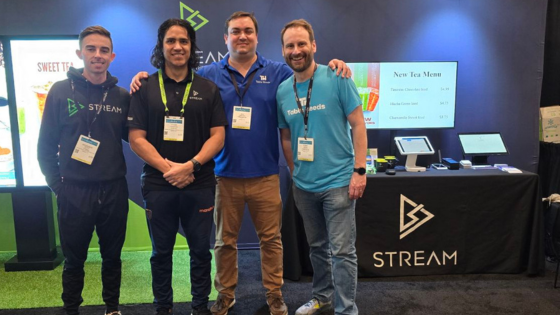At Table Needs, we believe employees are the foundation of a successful restaurant. When they’re cared for and happy, retention improves. It stands to reason the diner experience does, too. Since good employees beget satisfied, loyal customers who generate repeat revenue, nurturing your staff is straight-up good sense.
Of course, there are many forces at play right now in an industry that experienced significant ups and downs since the pandemic hit. Things were not perfect before that. Historically, restaurant industry wages have been too low, benefits have been hard to come by, and employees don’t feel valued and consequently don’t stay long.
The numbers don’t lie
Black Box Workforce Intelligence and hourly job marketplace Snagajob recently surveyed over 4,700 former, current, and future hourly restaurant workers to see where things landed.
In the resulting study, The Post-Pandemic Restaurant Employee: Who Wants to Work and Why, clear patterns emerged.
- Fast-food workers saw their pay increase by 10% in 2021 compared to 2020; full-service hourly staff saw a 12.5% average increase in 2021
- Average overall food-service wages average above $15 per hour for nonsupervisory employees, per data from the Bureau of Labor Statistics
Yet there is a 144% turnover rate at fast-food establishments and U.S. Labor Department data revealed restaurant workers are quitting at the highest rate in two decades — 5.7% in June 2021, for example. That’s more than double the overall quit rate of 2.7%.
Couple that with the fact that 10% fewer people are even looking for jobs and there are 70% more vacancies than there were pre-pandemic. Understaffed restaurants mean customers have to wait longer for tables, meals, and checks. Opening hours may be scaled back. Decreased capacity means a reduction in revenue, compounded by increased wages for less staff.
So, what is a restaurant operator to do?
Retention, retention, retention
First and foremost, you need to retain the staff you have. They should feel valued and respected and know they’re providing meaningful work.
Learning to manage volunteers–to whom, absent a paycheck, ideas and ideals were the only currency–taught me to view all employees essentially as volunteers. Today, even with compensation as a motivator, I know that anyone who works for my company chooses to to do so because of what we stand for. I believe that anyone who is qualified for a job in our company is also qualified for many other jobs at the same pay scale. It’s up to us to provide solid reasons for our employees to want to work for us, over and beyond compensation.
Danny Meyer, Setting the Table: The Transforming Power of Hospitality in Business
It’s also essential to understand why team members left. Exit interviews can help identify your restaurant’s strengths and weaknesses, as well as inform next steps.
Next, look at your benefits (or lack thereof). While offering health insurance comes at an added price, taking care of your team is imperative to keeping them long-term.
What about your operating model? Have you considered profit-sharing? Making on-call shifts available? Or providing free meals during shifts? End-of-year bonuses go a long way, too.
By making your employees feel cared for, you build trust and loyalty. You also pave the way for them to do their best work.
Outside-the-box talent acquisition
When it comes to attracting talent, check many of the old tactics at the door. Connect with the teenage kids of loved ones and friends. Incentivize your staff with an employee referral program. On top of bringing in applicants, period, connected employees are likely to try harder and stay longer.
Additionally, look closely at your current staff management model. Does it fill the bill? Beyond profit-sharing, some restaurants have opted to take a restaurant co-op approach, while others have gone gratuity-free. In order to position your restaurant as attractive to job-seekers, the current climate demands thinking outside the box.
Take technology to the next level
Designed to give you control over the employee, customer, and managerial experience, restaurant technology tools have the power to simplify and streamline operations. They can also free up — and maximize the potential of — servers. In other words, they can do more with less effort. And you need fewer employees to get the job done.
You can certainly start small, perhaps enlisting a digital menu or using it as a springboard for online ordering and payments. An easy-to-update and engineer menu opens a whole avenue of automated options, too. Ultimately, the goal is to make things easier on you and more pleasant and effortless for your servers and customers alike.
Taken a step further, a comprehensive POS system can tie it all together. Whether it’s quick-serve, a one-off transaction, or a full-service experience with guests who switch tables, add on diners, carry over bar tabs to tables, and split checks eight ways, it can be free of hassle, leaving your servers less stressed and your customers happier and more likely to tip well and return.
Such technology actually empowers customers, too. By allowing guests to place orders, add additional items, communicate with servers, split checks, add tips, flag a server, and pay via a couple of taps of their smartphones, the experience is in their hands, while taking the pressure off your staff.
As you look to the year ahead, Table Needs is here to help with tailored, plug-and-play restaurant technology solutions. Want to learn more? Let’s talk. And be sure to check out our blog for helpful tips, insights, and tools.
Follow us for tips, news, and tutorials to run a successful small restaurant.






